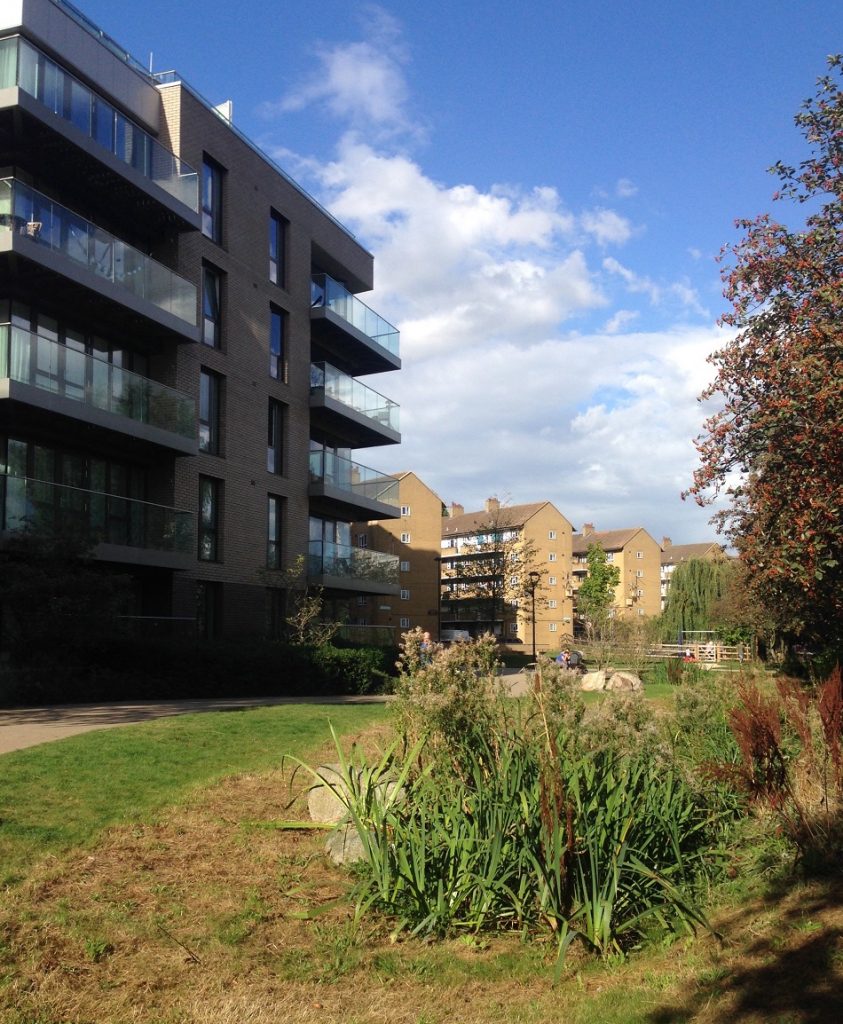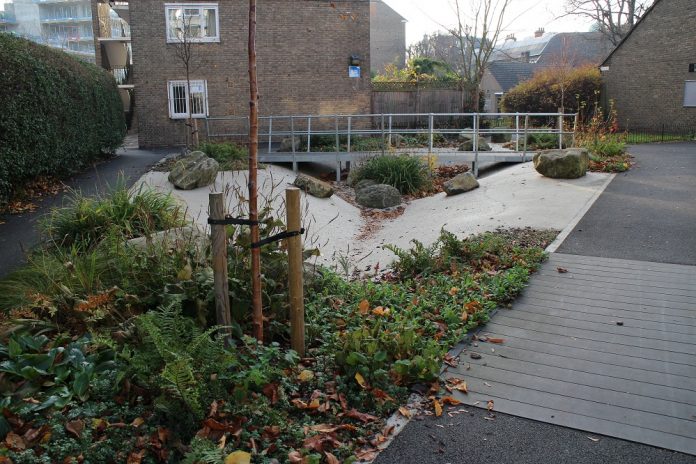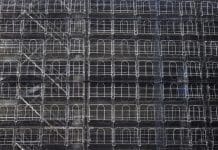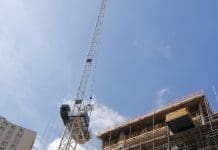Laura Grant, Policy Adviser at the Chartered Institution of Water and Environmental Management outlines why sustainable drainage systems are a vital component of any new development
Sustainable drainage systems have a part to play in modern developments. More homes and businesses are at risk of surface water flooding than from any other kind of flood and the problem is increasing with growing urbanisation and development. Over three million properties are already at risk of surface water flooding in the UK, and unlike other sources of flooding which may be more predictable, it can affect properties which are not identified on flood risk maps. This kind of flooding can devastate people’s lives, their homes and businesses and make moving house or finding insurance difficult.
The government’s ambition is to build one million new homes to tackle the housing crisis over the course of this Parliament. It is right that as we look to significantly increase our housing stock, we consider if it will be resilient for years to come. It’s been two years since planning policy on sustainable drainage systems (SuDS) was changed, and data on its effectiveness is sparse: there is no requirement for local authorities to report on SuDS uptake, nor monitor whether they are actually implemented or effective.
CIWEM decided to take matters into our own hands – coordinating the largest cross-sector survey of professionals to date. Responses to last year’s Big SuDS Survey show:
- 70% think current planning policy does not sufficiently encourage SuDS;
- 75% are not assessing the costs and benefits of SuDS schemes;
- 75% considered that planning authorities did not have adequate in-house expertise to consider the merits of proposals;
- Only 8% think the current standards are driving high-quality SuDS.
Achieving multiple benefits
Our research indicates that the vast majority involved in delivering SuDS consider current policy is ineffective with many new homes built without delivering the full benefits of SuDS.
The most effective SuDS schemes combine source control – as close to where the rain lands on the ground – with successive stages of a SuDS management train that can include other storage and filtration components. Managing rainfall at source ensures silt and pollution do not flow freely into watercourses, controlling the flow and quality of water for use further downstream.

Components downstream in the management train can include detention and retention basins and urban ponds, providing temporary storage of water and to trap and treat pollutants. However, some of these components are often poorly designed; many existing examples resemble neglected bomb-craters, rather than realising their potential as attractive and biodiverse wetlands for communities to enjoy.
Only eight percent of survey respondents believe that the current non-statutory SuDS standards are driving installation of high quality and effective sustainable drainage systems in England. The government’s non-statutory technical standards are intended to ensure that drainage matches green field run-off rates for new build developments, but there is no mention of any requirement to implement any wider benefits. The standards can actually be implemented with conventional drainage. They are dominated by attention to the quantity of water attenuated because it is calculable, whereas water quality, amenity and biodiversity are ignored perhaps because they are less easy to quantify. In this way, the standards neglect the key aspects of SuDS – the multi-functional and cost-sharing benefits and their important role in successful place-making.
There should be more incentives to design SuDS that provide wider benefits. CIWEM and its partners have called for new standards to be developed aimed at optimising opportunity to achieve amenity, biodiversity and water quality benefits as well as flood risk reduction. The Welsh non-statutory SuDS standards which are in line with the SuDS Manual would be a good place to start.
New standards would also need to reflect the requirements of the adopting authority so that they can establish an approval process and adopt with confidence. They should also be easily understood and followed by developers and their consultants.
Improving standards is not the only barrier identified by the research. We have also called for the government’s SuDS review to look at strengthening planning policy and planning practice guidance, clarifying ‘adoption’ arrangements and allocation of maintenance responsibilities and looking again at incentives to retrofit.
Strengthening policy so that SuDS are considered from the outset would help to ensure that schemes are well designed and implemented, delivering cost savings and communities with higher levels of health, productivity and vitality.
CIWEM’s report ‘A Place for SuDS’ is supported by 15 professional bodies and environmental organisations including the Royal Town Planning Institute (RTPI), Royal Institute of British Architects (RIBA), Institution of Civil Engineers (ICE) and the Landscape Institute. www.ciwem.org/suds
 Laura Grant
Laura Grant
Policy Adviser
Chartered Institution of Water and Environmental Management (CIWEM)
laura.grant@ciwem.org














